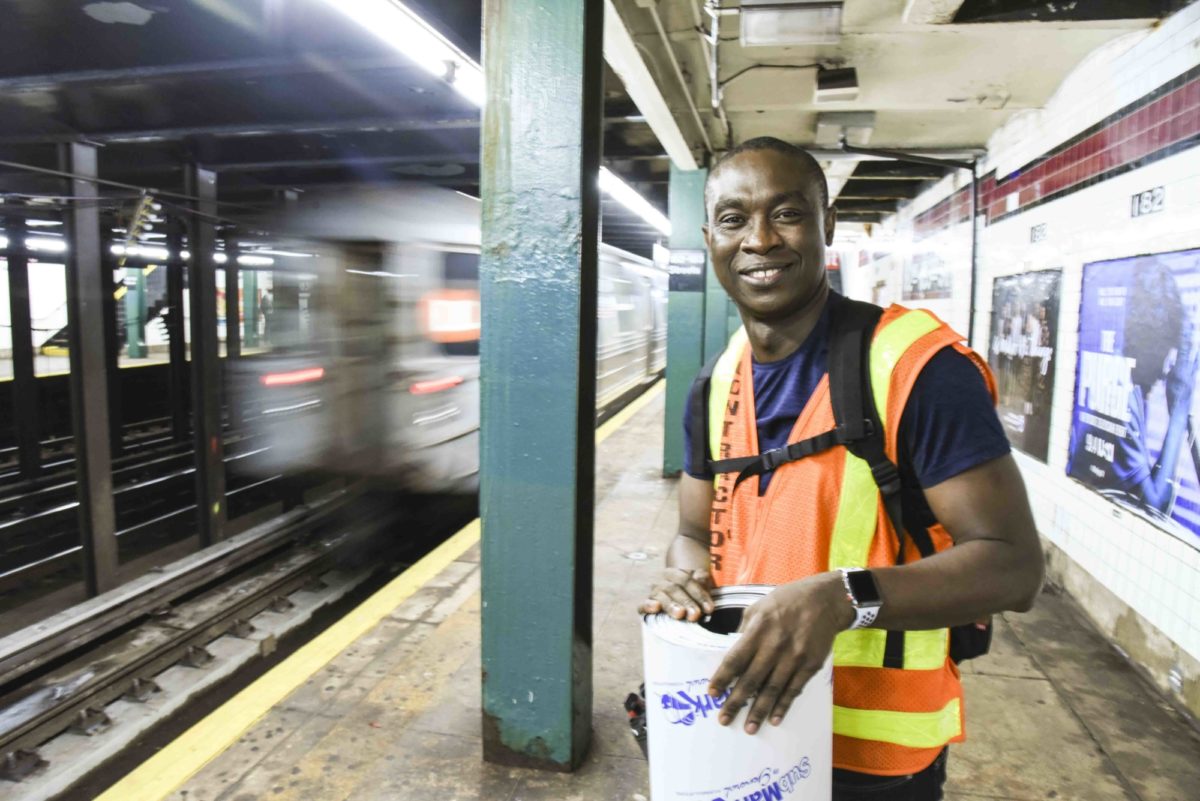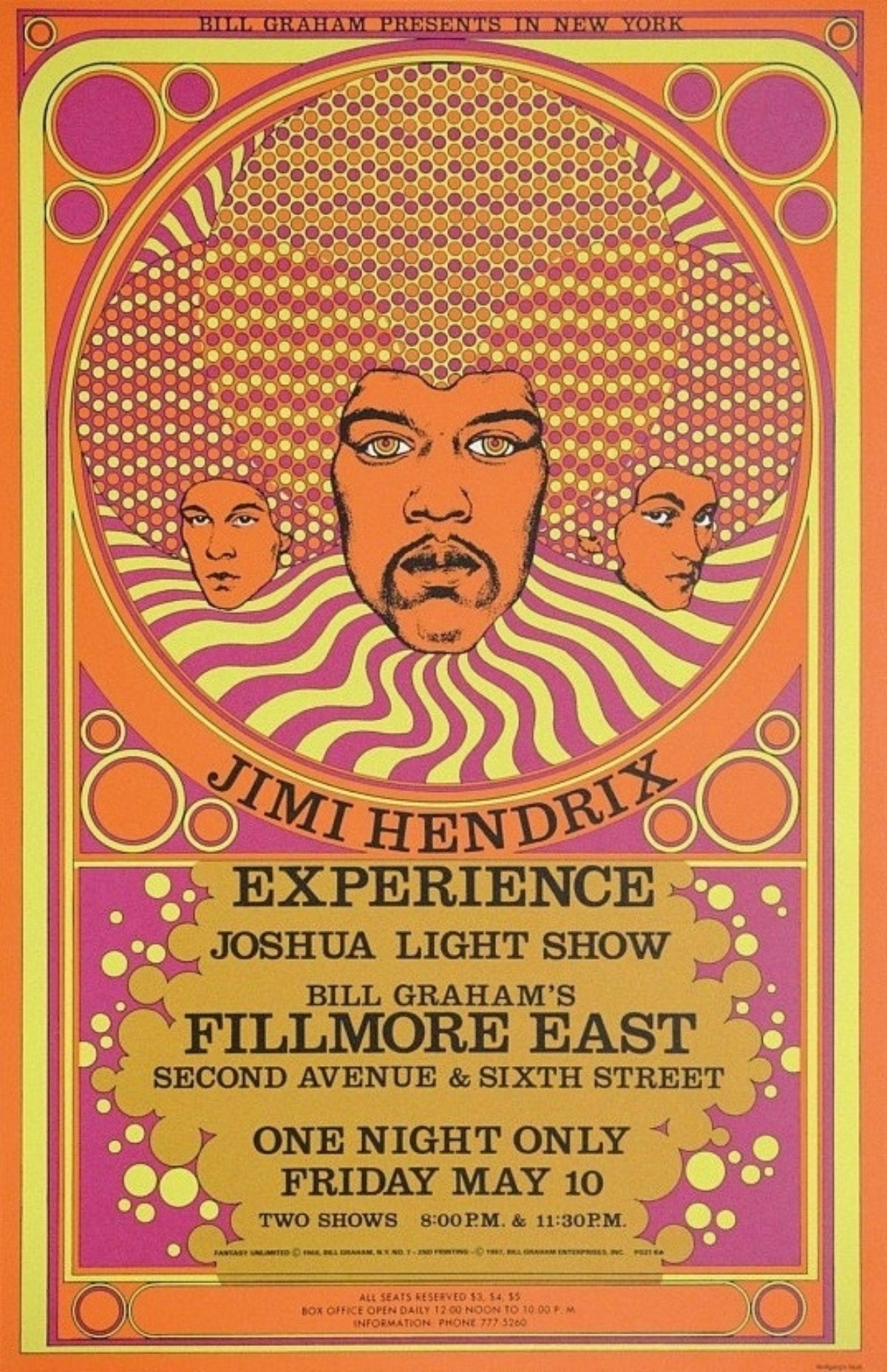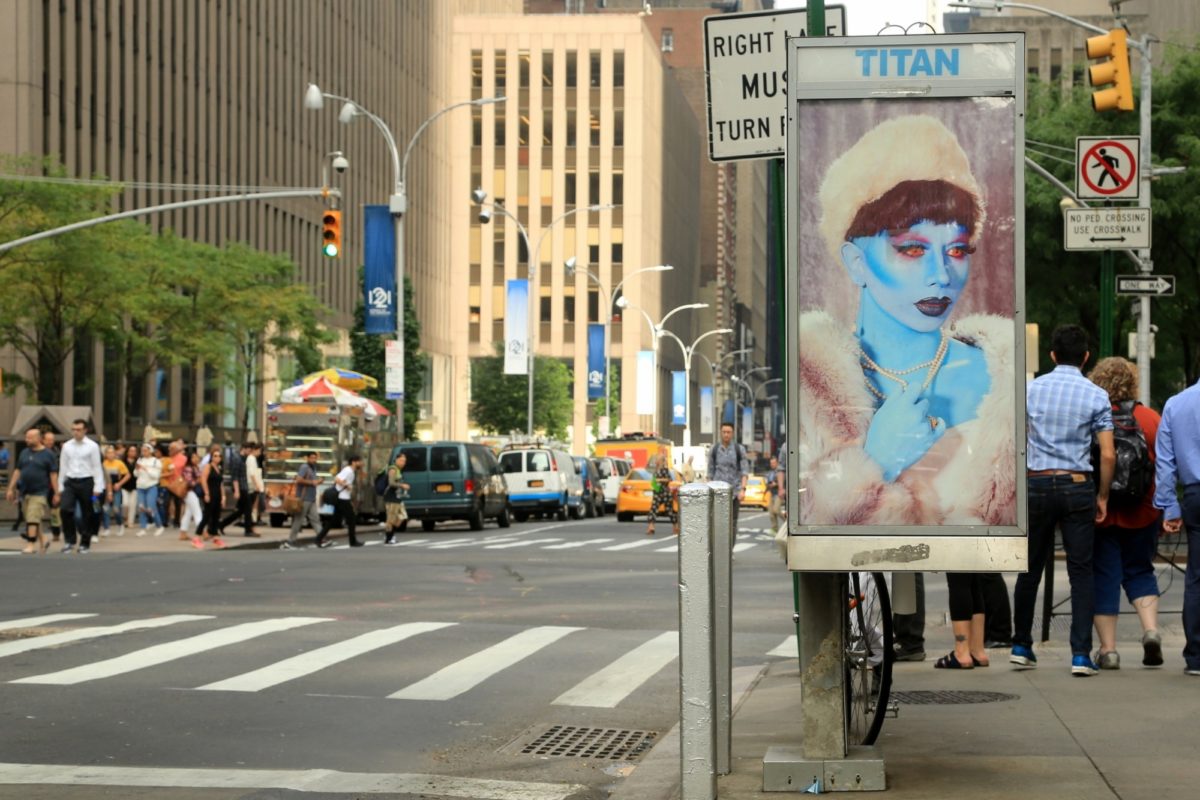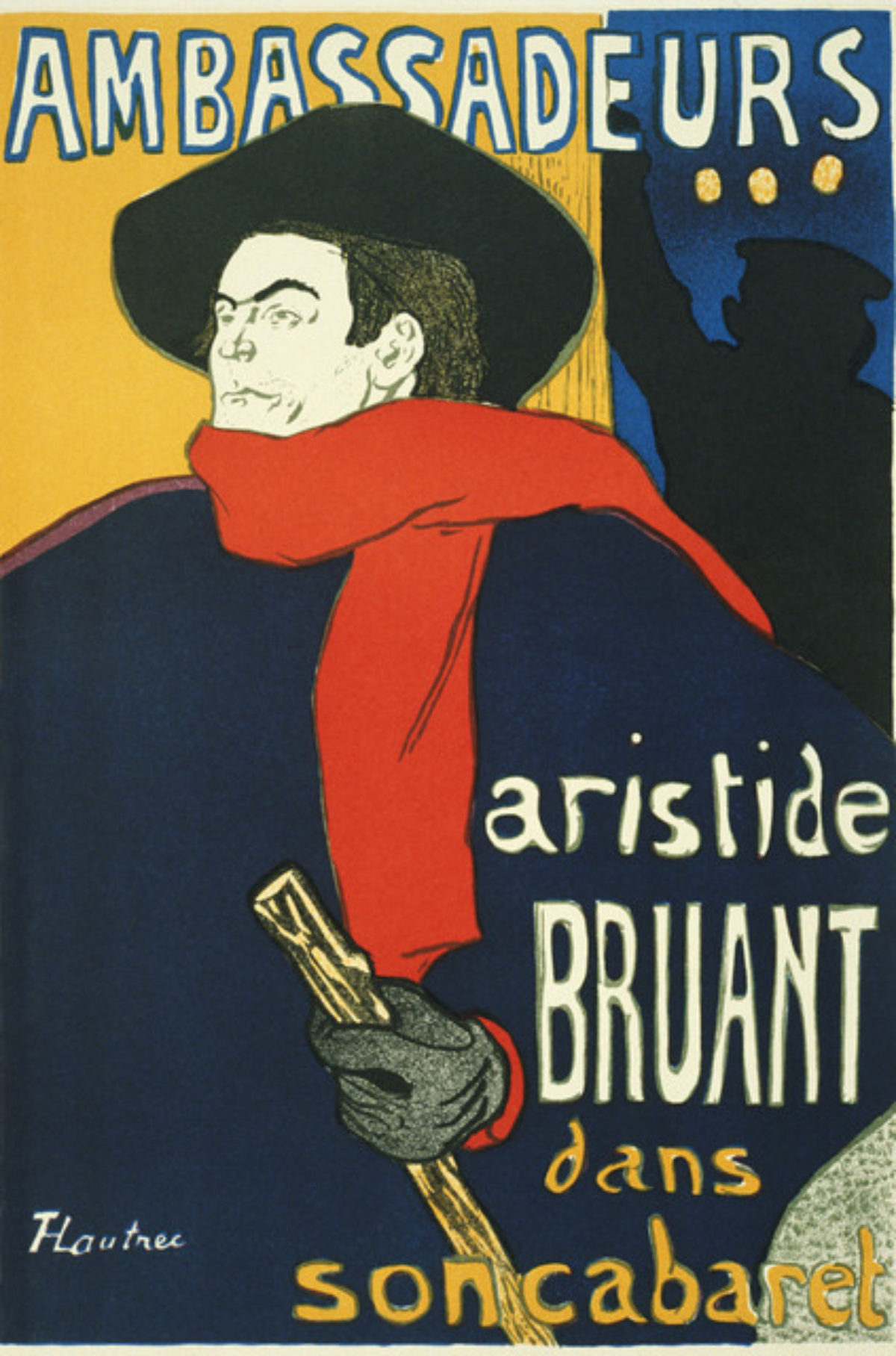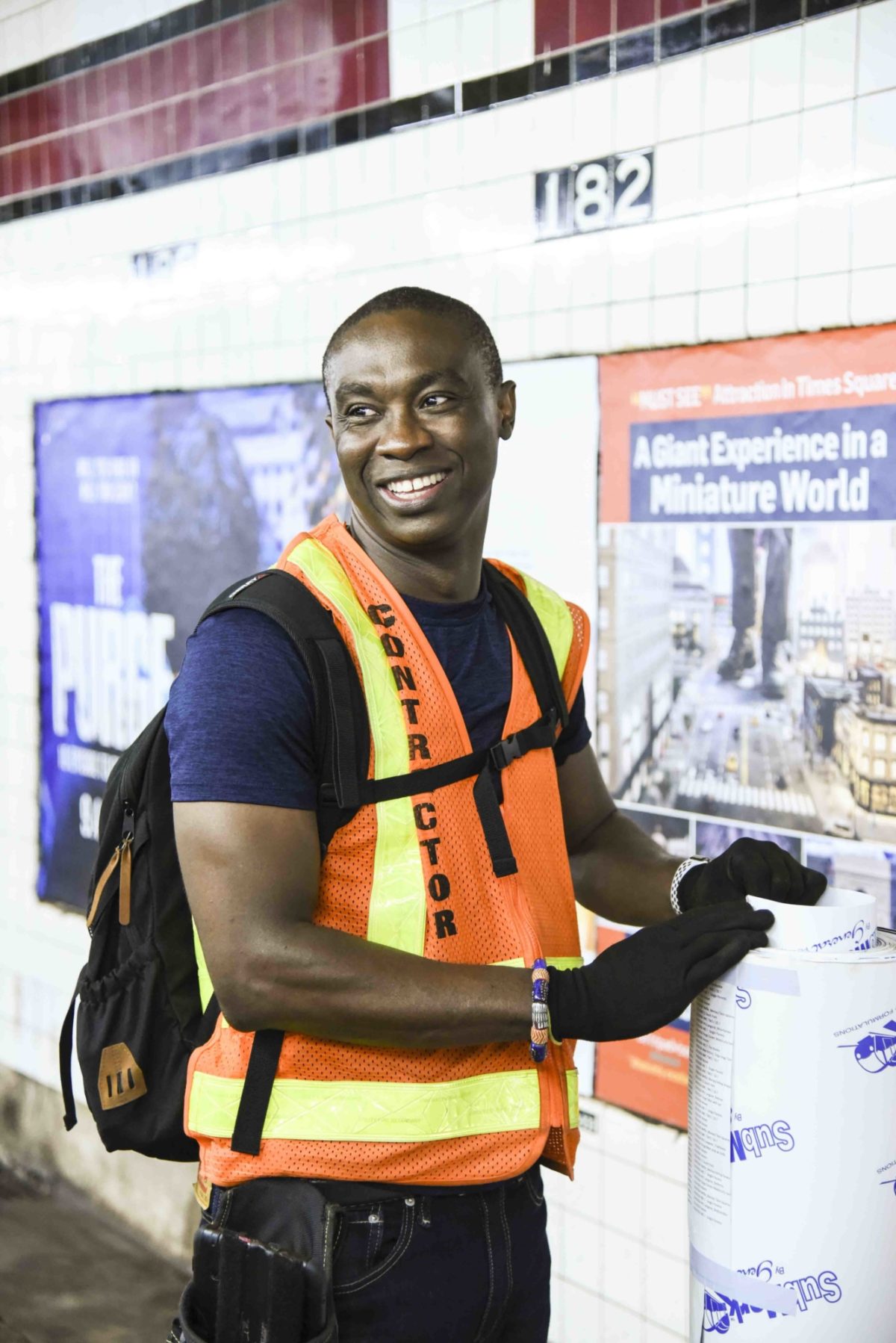
The Secret Life of Billposters
Last week, Poster House was given special permission by the MTA and OUTFRONT Media, the largest media company in North America, to shadow billposter Kennith Anim as he installed posters along the subway. We were lucky enough that he also agreed to an interview as he worked. Read on for everything you ever wanted to know about advertising in the underground!
This interview has been edited for clarity.
Poster House: Just so everyone gets a sense of who you are, how old are you, how long have you lived in NYC, and how long have you been a billposter?
Kennith Anim: I’m 43 years old, and I’ve been doing this for 17 years. I’ve been in New York for 21 years.
PH: Do subway billposters work for the MTA or for OUTFRONT?
KA: I work for OUTFRONT Media.
PH: What is the relationship between the MTA and OUTFRONT as far as subway advertising goes?
KA: Our relationship is we work on their premises. We rent the space to put up advertisements that we print.
PH: And does OUTFRONT own all the ad spaces in the subway?
KA: Yeh!
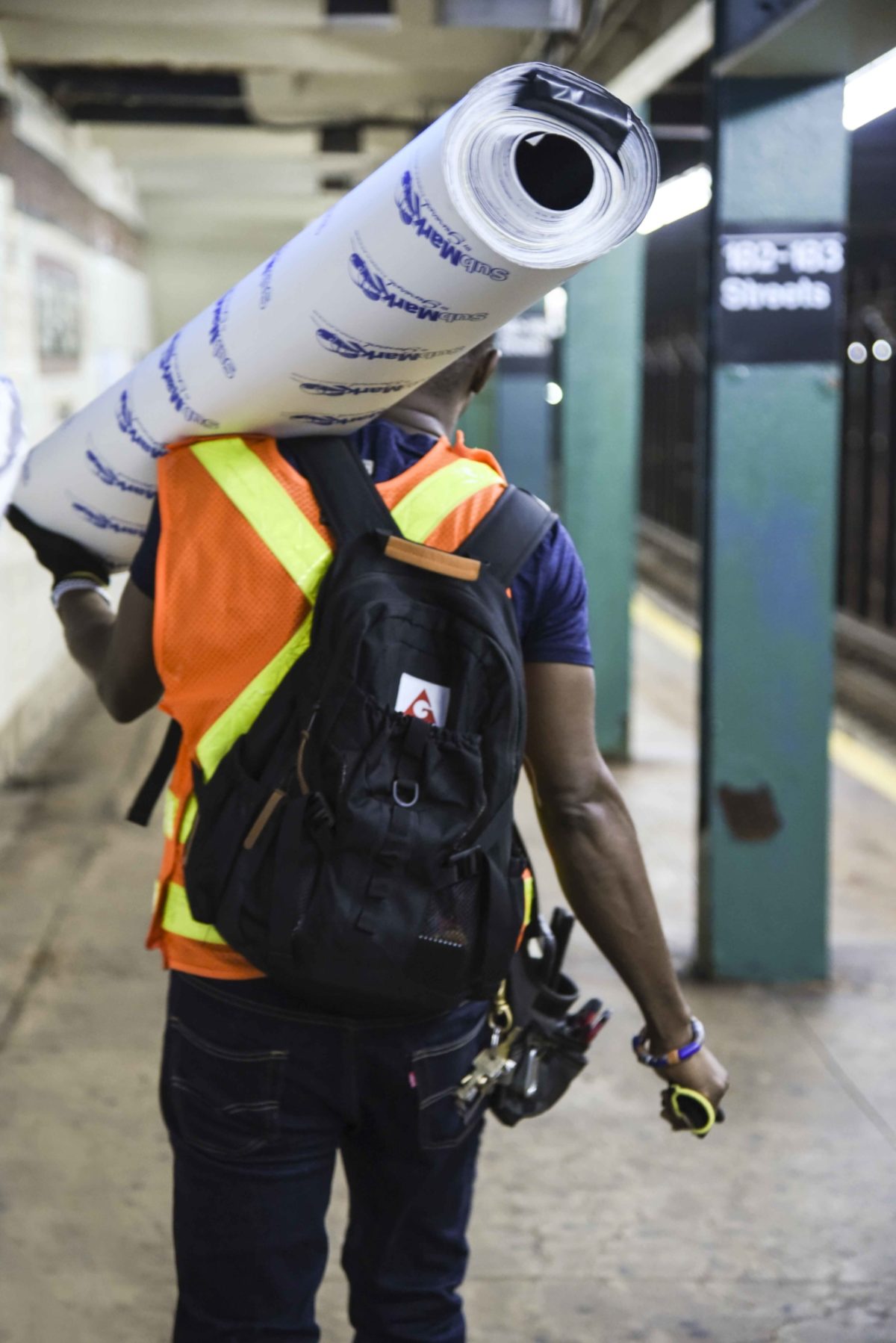
Kennith with his roll of posters for the 182nd Street platform
PH: Did you start in another department before becoming a billposter?
KA: No, I’ve been doing this from Day 1.
PH: Is there any special training that goes into doing this job?
KA: We start from the very scratch, where you learn how to keep the posters together by name, by contracts. And then we learn to roll them out and load the tubes that we bring to the platforms.
PH: So you load the tubes based on your particular route? Do you get a sheet or something that tells you what you’re posting and where it will be posted each day?
KA: Exactly. Here is today’s.
PH: Are each of the spots numbered? So, for example, the poster that you’re about to put up is not going to go on this right panel, but on this left one, correct? So every advertiser would know exactly where their poster is going to be positioned on the platform?
KA: Exactly. See, this contract says 019 is for ABC/Rookie, and that’s the number below this frame. So in the room I work with them, they’re all labeled. But in the course of the week you get to know them by color. So I need ABC/Rookie (here Kennith magically pulls out the poster for the TV series from the middle of the roll). Then, when you post it, I want it to look good. And so I have to bring this old poster off the wall before I put this new one up.
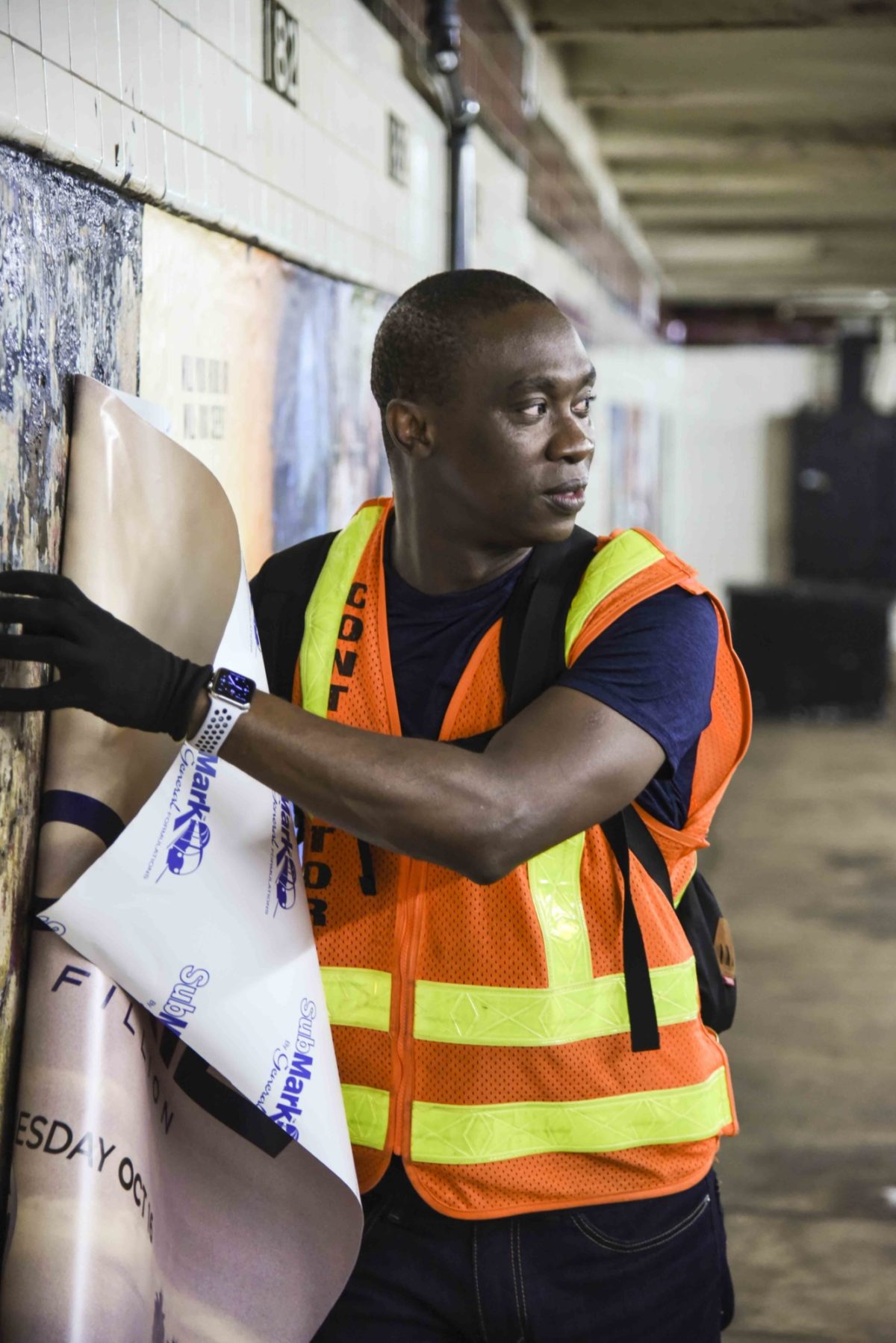
Kennith about to place the poster for ABC’s The Rookie
PH: Do you always take the expired posters off the walls before you put new ones up?
KA: Not all the time. When it’s one piece, it’s very hard for that one piece to come off. So maybe if you have like two posters, it’s ok – you can pull them off because they stick together and you can put a new one on top. Here, though, it’s not sticking to the board even though it’s one piece, so I can pull it off.
PH: Do you put up all the posters that are in the subway or just the paid advertisements? I know the MTA has the Art & Design series – do you do those, too?
KA: We put all those up. There are a few of them on the bare tiles that we don’t do – ones for the MTA concerning track work for the weekend and stuff – we don’t put that up. We only put up advertisements.
PH: Who puts up the train schedule changes and stuff like that?
KA: The MTA.
PH: What about the posters in the trains?
KA: That’s carding, and we do that, too!
PH: “Carding” is what the ads above the seats and in the square frames on the trains are called?
KA: Yes. And I do it, too, sometimes.
PH: Do you guys only work during the day or is there a night shift too?
KA: The night shift is the carding in the trains.

An old poster gets removed before Kennith puts up a new one
PH: When you first got the job, did you apprentice under someone or is it just a situation where everyone gets trained all at once and then they just trust you to do the job?
KA: No, you’re given to someone who has been here a while, who has experience. And then that person trains you until he can see that you are able to go out yourself and take care of business.
PH: Are you assigned a specific route or does it change?
KA: I’m assigned to a specific route for five days.
PH: Why five?
KA: Because we work five days in a week. The days are put in alphabetical order: so I have my A day route, B day route, C day, D day, and E day. So today, being Wednesday, is definitely my C day route.
PH: Do you always have the same five routes?
KA: That is assigned to you, yes, but in case someone is called in sick, then you can be assigned to do that person’s route, too, after you are done with your own.
PH: Does your series of routes mostly have you stuck up here along the Grand Concourse or do you do the whole city?
KA: Now we work on a line. I have almost all of the D line, the stations, and then somebody takes over the rest of the line after my five days. Before, we used to have an A day route in Manhattan, a B day route over here, but then we decided to make it a little easier and streamlined it.
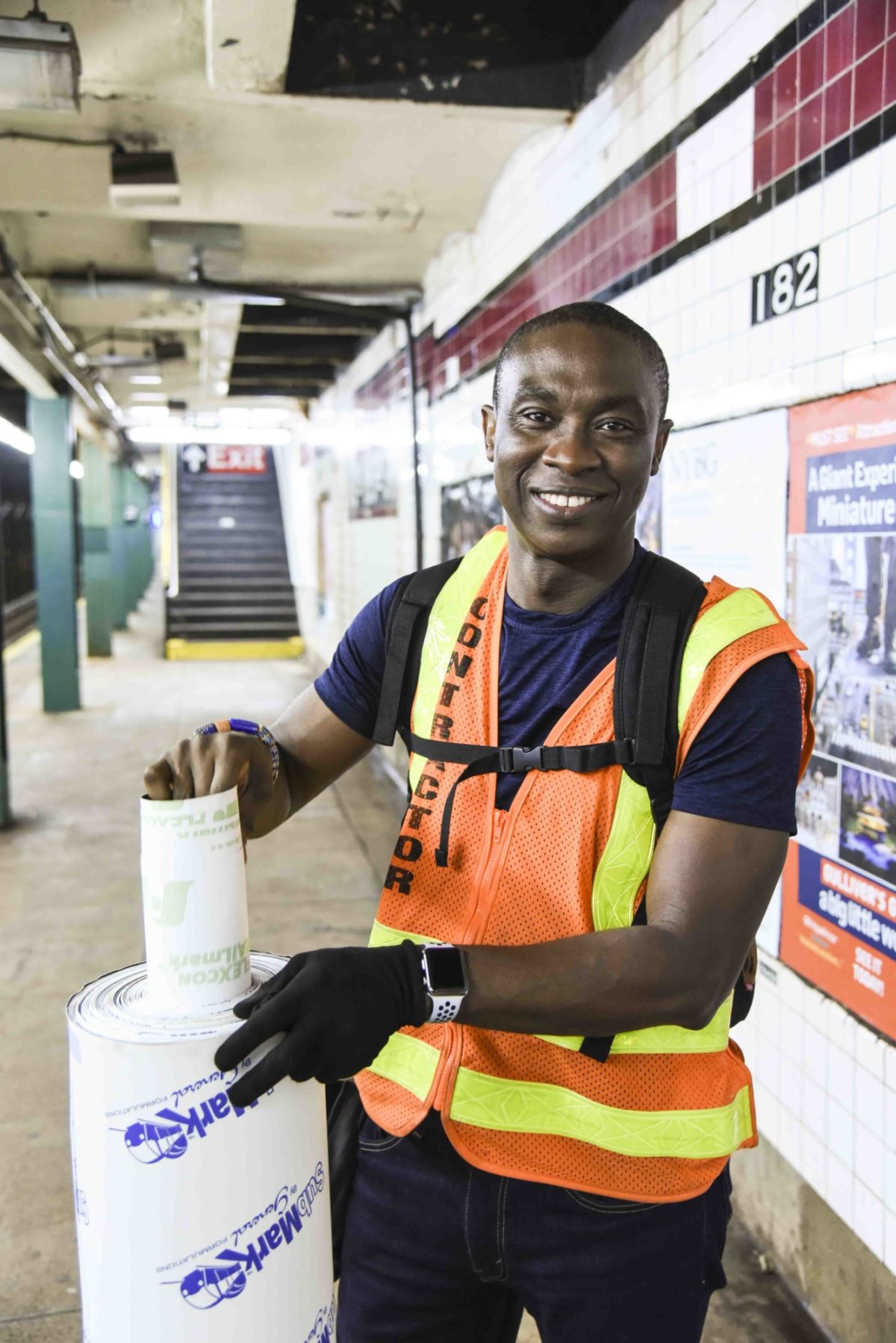
Kennith knows each poster by color, so he can just pull one from the roll depending on what needs to be hung
PH: What are the posters printed on?
KA: It’s vinyl.
PH: I’ve noticed that some of them have different finishes – both Matt and glossy – does this matter at all as far as installation is concerned?
KA: No.
PH: Now, the posters in the trains are not vinyl, right? So do you need different tools to hang them?
KA: Yes. With the squares, we sometimes need tools. Some of the trains, like the green line (which is the 4, 5, 6 line) is a new kind of train, so we need a tool to open the squares. In the older trains, you sometimes need a tool, but we also have a way of popping it out by hand and getting it in there.
PH: I see you’re wearing gloves for the vinyl installations today. Are they special in any way?
KA: No, no – this is something I picked up at Home Depot. In the beginning it sticks a little, but we know how to work it so it becomes easy.
PH: And what about the squeegee you’re using to flatten out the vinyl once it’s applied. Is it just a normal squeegee?
KA: Yes, but then you put felt on it so that it’s smooth.
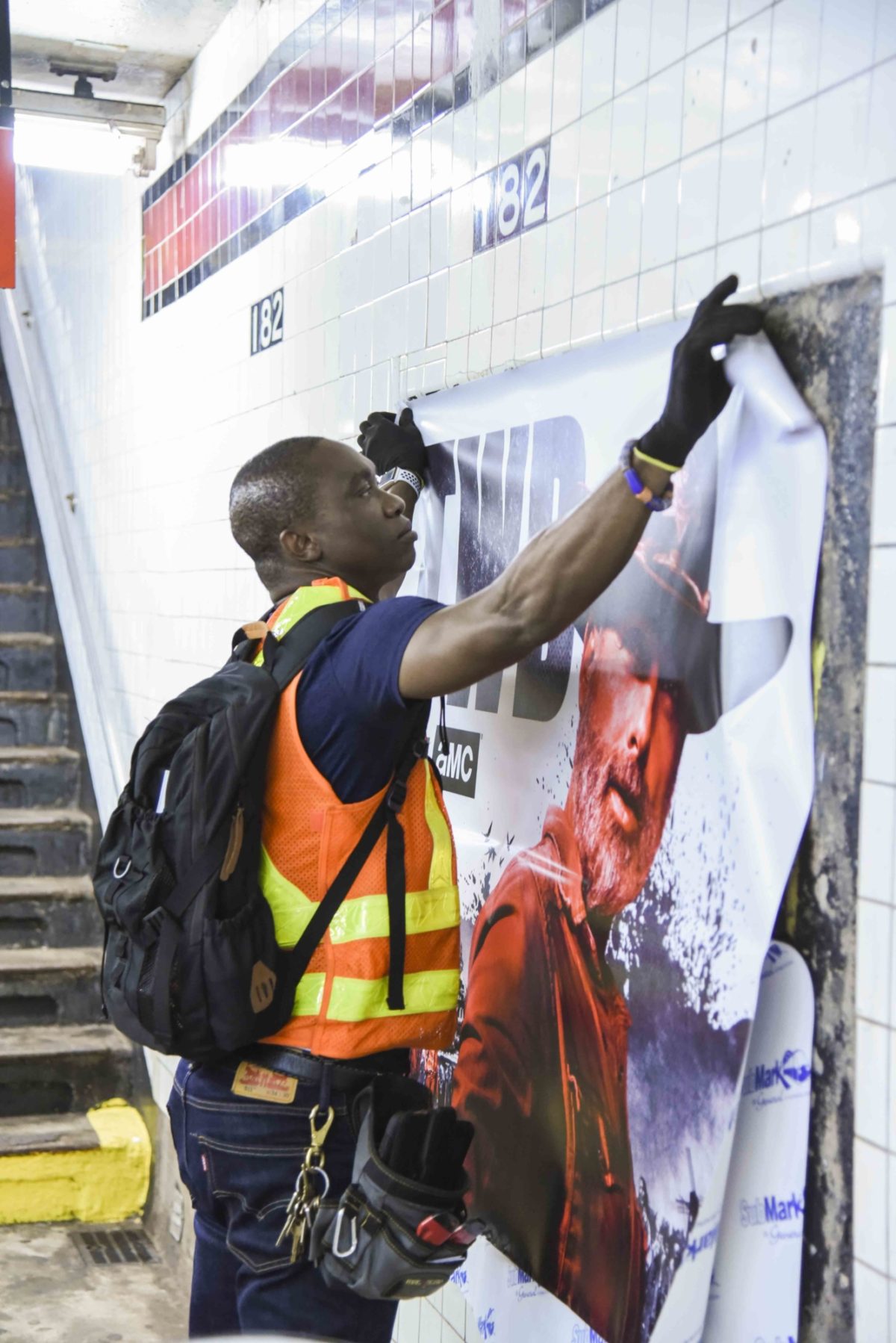
Kennith puts up a new poster for The Walking Dead
PH: How many billposters are there in the city?
KA: Now we have about 14.
PH: Only 14?!
KA: Just the billposters, yeh, there are about 14-16 of us.
PH: I thought there would be hundreds of you guys! How long is a shift, and how many stations can you do in a day?
KA: A shift is 8 hours. Today, this is the only station I will do, but let’s say another day, my B day route, it could be two small stations put together. So you’d move from this station to another station that day, and then another day you’d just have this big station to work.
PH: How long does it take to do a whole platform?
KA: Ehhh, let’s say that I do here to the other end of the platform – it can take me about an hour and a half. You have to put in your best, you have to make it look good, and that takes time.
PH: How often do the poster change?
KA: It depends on whoever is buying the space, on how long they want it up. Somebody may want it up for two weeks, but I also see some of them for one month – so it depends.
PH: So it would be very rare for you to change every poster in a single station in one go? Instead, every day some posters will be going down and some will be going up?
KA: Exactly.
PH: What’s the longest ad that you’ve ever seen up? I’m thinking of the banner above the subway maps that advertises Wicked right now – I feel like it’s been up forever.
KA: That is for the MTA so it stays up longer, until they probably come out with a new design, a new advertisement. Then we’d change them. As far as a regular ad, maybe a month and a half is the longest I’ve seen one up.
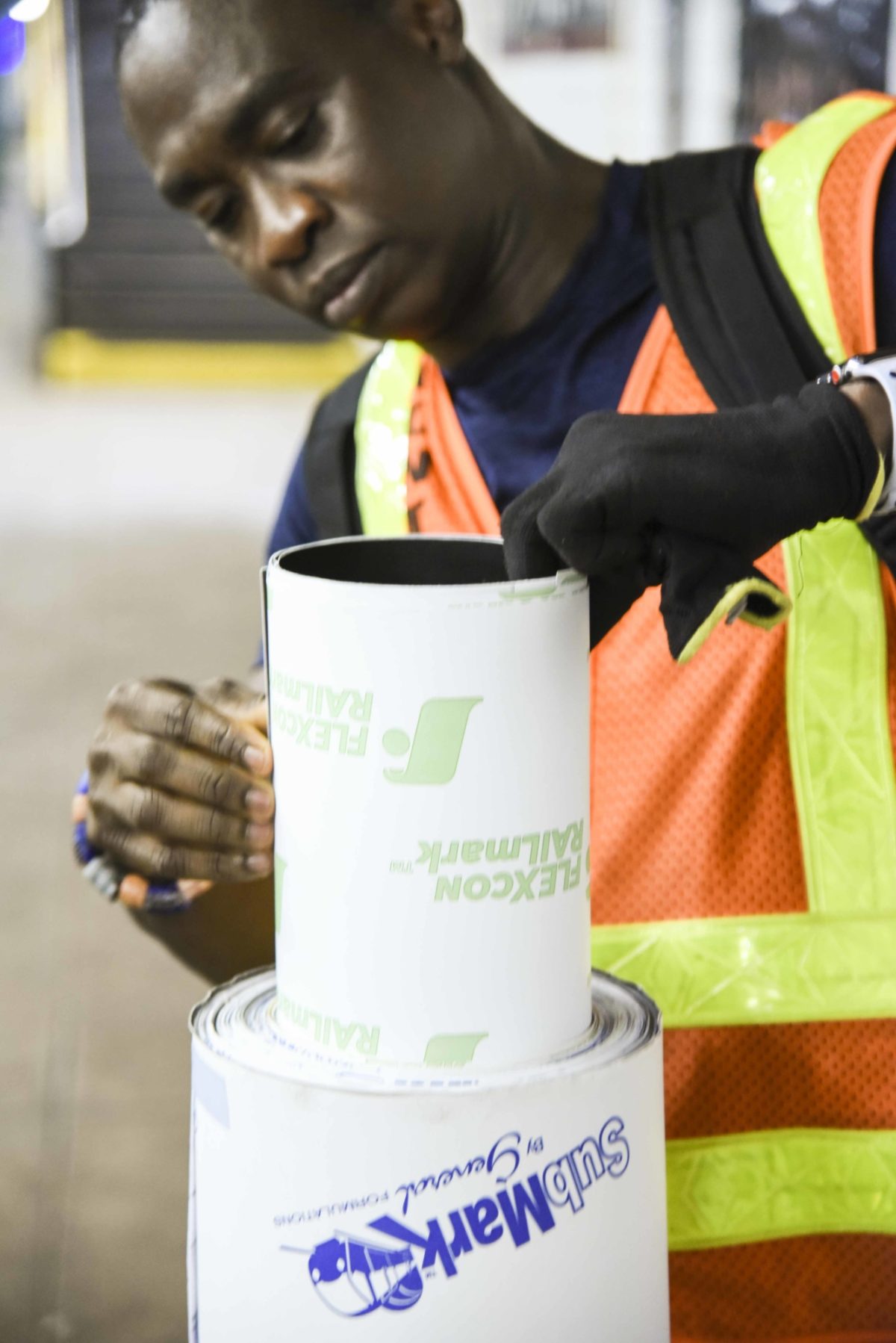
PH: When did the posters switch from wheat paste and paper to vinyl?
KA: Oh, that’s been maybe ten years.
PH: Did you used to install the wheat pasting version? What was that like?
KA (laughing): Yes. And I like vinyl better than the glue! It’s cleaner, and it’s easier to work with. Back when we used glue, when it was really cold, you’d get to the platform and the glue would be almost dried up. And sometimes it would be hard to open and put up, and if it’s really cold you can’t even get it to stick. With the vinyl, they have a winter material especially for when its cold that they know will stick better.
PH: They use different types of vinyl adhesive now depending on the season?!
KA: Yes.
PH: And with the old wheat pasting method, they came to you pre-glued and you just wet them? Or were you here with a bucket of glue?
KA: That was in the olden times! My time we had a bucket that we would mix, and glue the posters in our room. Then we’d fold them and bring them out here to the platform.
PH: And that way didn’t just leave a big sticky pile of soggy paper?
KA: That was the problem – sometimes they were sticking together, so I think that’s the reason why they changed to vinyl.
PH: Do you know if the process is different in other subways where OUTFRONT rents the media space? I know they also run the subways in Washington, DC, Boston, Los Angeles, and Atlanta.
KA: Each subway has a slightly different technique depending on the framing and where the posters go. Some places don’t have posters, but live boards.
PH: Ooof – how is digital going to change your job?
KA: (laughs) This problem of course clicks in your mind every now and then!
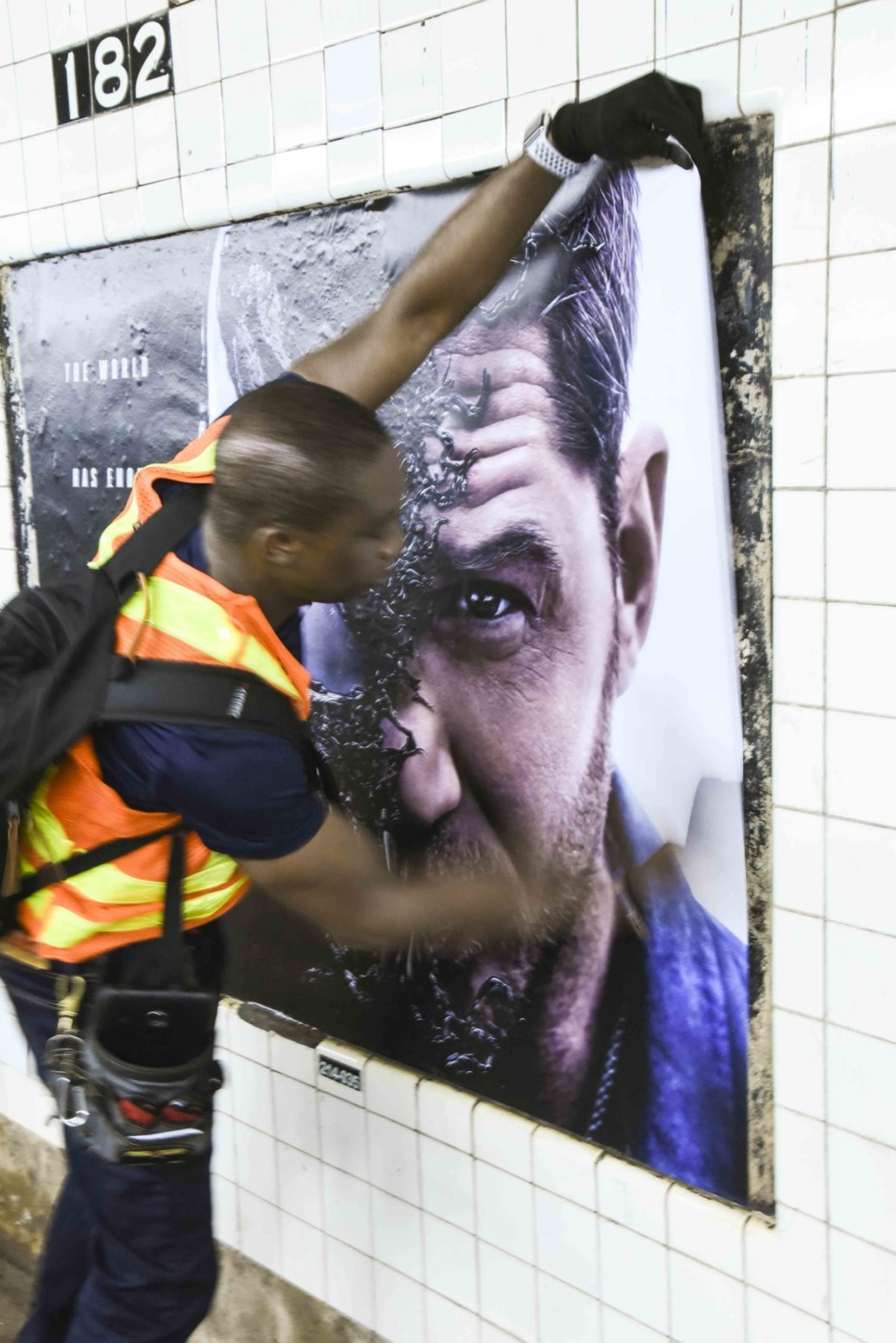
Kennith puts up the latest poster for Venom
PH: After you’ve put up a poster, do you do anything else or do you just move on to the next one?
KA: I collect everything on this computer. I take a picture (of the poster installed) and it goes straight to the system, and shows that you have completed the task. You have a number below each poster. The first half of the number is the station code – in this case, 214 – so they know I’ at the 182nd Street station. The second half is the individual section.
PH: I know that each station has a different amount of ad space – what’s the smallest and what’s the biggest number per station in the city?
KA: The is one of the biggest. We have some that are smaller, but I would say that’s more average than small.
PH: Have you ever done one of the Station Domination campaigns where a company takes over a whole station? How long does something like that take to install? For example, if you did Union Square, how long would that take?
KA: Sure. If I did Union Square it would take maybe 3-4 hours. Not with one guy, but with a couple of guys – maybe 6, 7 guys – to do the whole station.
PH: Do you normally work in teams?
KA: Only when we do a Station Domination.
PH: What happens if you make a mistake – say, if you put the poster in spot 21 instead of in spot 15? Can you just peel it off and put it in the right area?
KA: You have to let your supervisor know. Sometimes you can peel it off and fix it – you see I can peel this one off because there’s nothing underneath, so I can play with it and brig it into the right spot. But when you have (another poster) under there, it becomes difficult for you to peel it off. So I’d have to have it reprinted.
PH: How do you upkeep the spaces where you put the posters – the blank walls underneath. Do you guys clean it up every now and then if it gets too dirty or cluttered?
KA: The MTA takes care of that.
PH: And what about when posters get graffitied? Do you need to replace them if they have a lot of graffiti?
KA: If it is very bad we change it; if it’s something minor, we clean it. There’s this kid who has his own signature and will put it on almost every poster in a station, and that day you know you have a lot to do.
PH: Why is this one panel blank right now?
KA: Because somebody pulled it off! So today I have to replace it. Luckily today I have a poster that was going to go up in that spot. If I didn’t have a new poster, I would have to let my supervisor know that 035 is missing and we’d need to print a replacement.
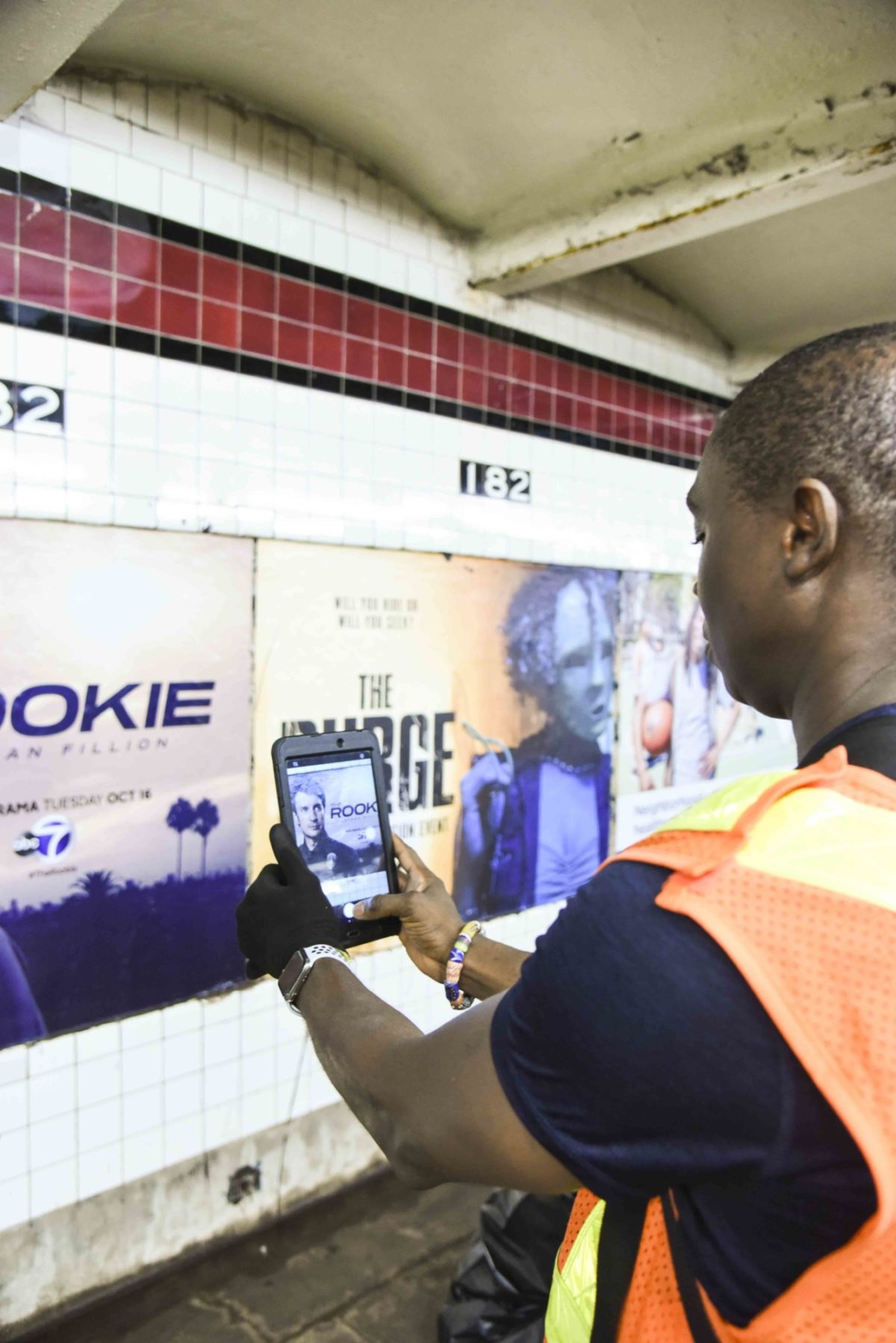
Kennith documents each poster as he puts it up so that the client has confirmation of its placement
PH: Ok, now for more of a fun question: what is your definition of a good poster?
KA: My definition of a good poster is a good movie poster. Spiderman!
PH: Have you seen advertising change in NYC since you’ve been here?
KA: No, I think advertising is one of the businesses that will always go on. When no business is going on, everyone advertises to bring it back. So, it has and will always be here.
PH: Finally, I have to say I’ve never encountered a billposter working in the subway. Are you guys invisible ninjas?
KA: I know. Before I started, I never saw anyone put up posters. And almost every day someone walks up to me and is like “ohhh I didn’t know that’s how you put them up!” This one guy on Monday said to me, “oh, bro, I always thought these were drawings!”
